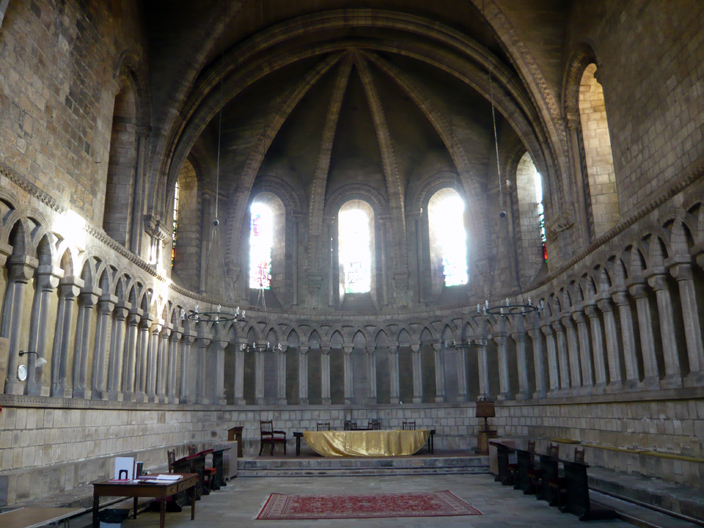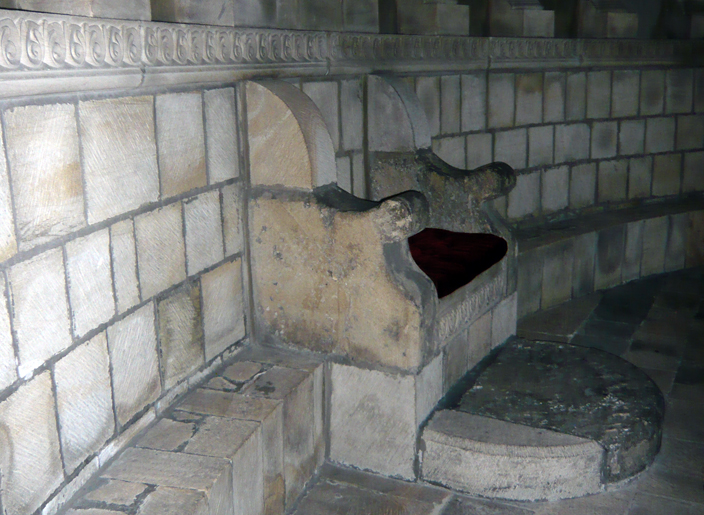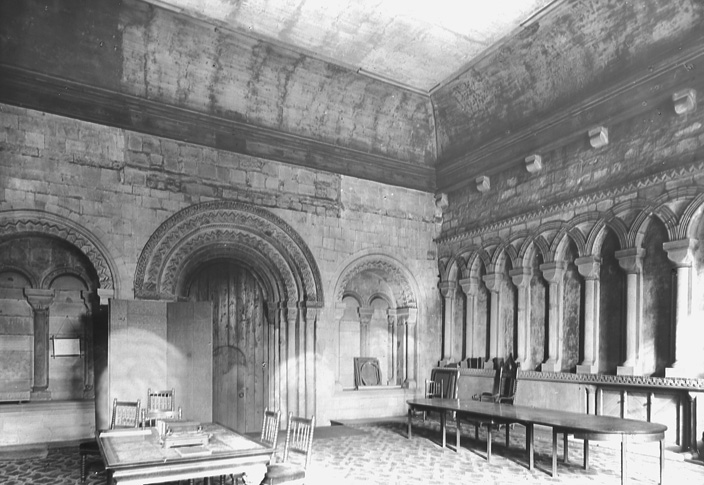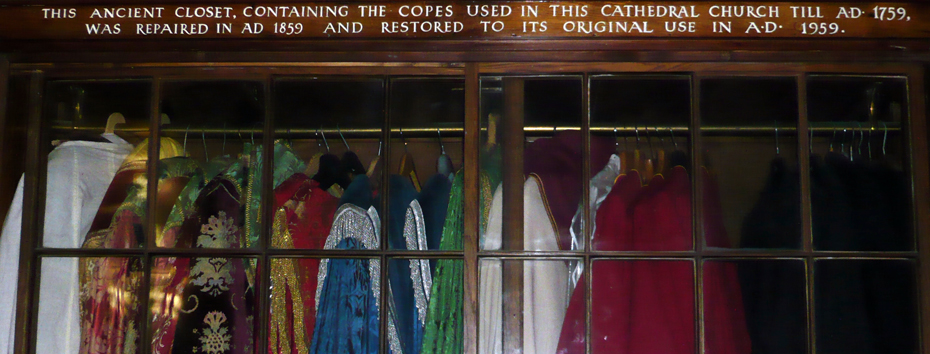
The Durham Chapter House as it looks today. Much of the ceiling is a reconstruction of the original.
Chapter and Chapter House: What They Are
The Chapter House is where the daily business of a monastery would have been carried out. The monks gathered here and sat on stone benches or ledges lining the walls.
Every day, a chapter from the Rule of St Benedict would be read out by to the monastic community. It was this that gave the Chapter House its name – it also led to the governing body of a cathedral collectively being referred to as ‘The Chapter.’ (The individual members of a cathedral chapter are called Canons).

The Prior's seat in the Durham Chapter House and the stone ledge upon which the monks would have sat.
The Durham Chapter House
The Durham Cathedral Chapter House is, to a large extent, a reconstruction of the original and dates from 1895. The original Chapter House was partially demolished in 1796 because its large scale and high ceiling made it difficult to heat, and the 18th century clergy did not like it!
The first Norman bishops are buried underneath the Chapter House floor.
Why were the Early Norman Bishops buried in the Chapter House?
As the Cathedral was constructed as a shrine to an important saint, Cuthbert, the burial of less holy men in the vicinity of St Cuthbert’s shrine was considered inappropriate. The early bishops of Durham were therefore buried under the Chapter House instead. Although such restrictions were loosened at times, the Cathedral nave has very few tombs for a building of its size and importance.
Members of the Neville Family were the first lay people to be buried within the building.

Image of the Chapterhouse as it looked after its original ceiling was destroyed to make way for this lower one.
© Durham Cathedral and Jarold Printing

